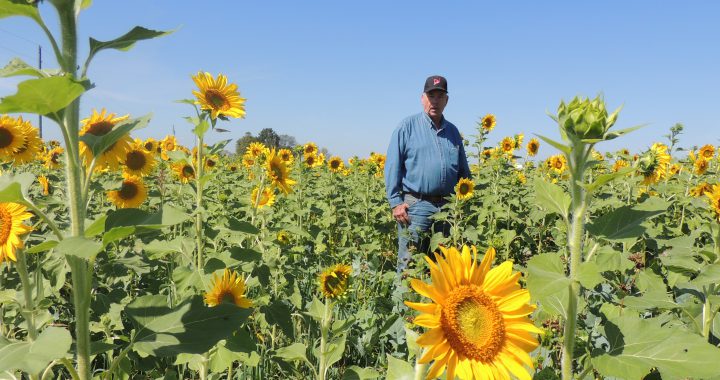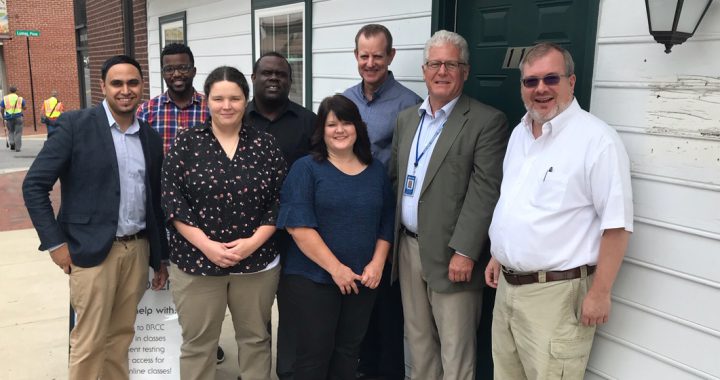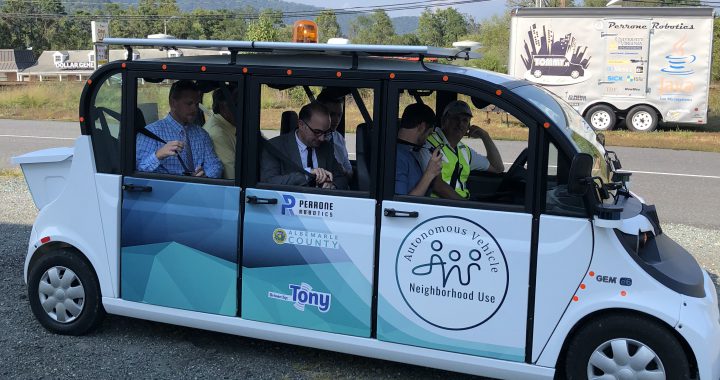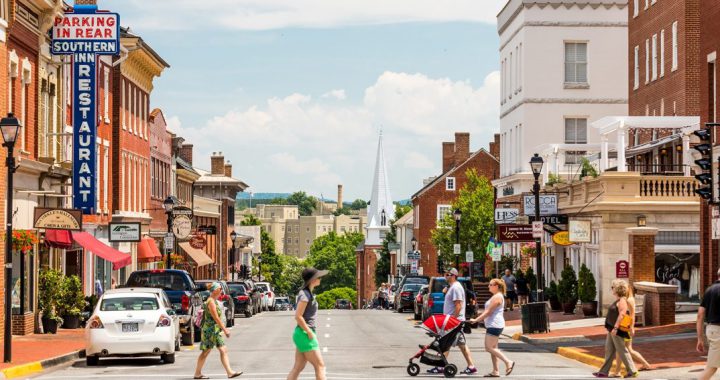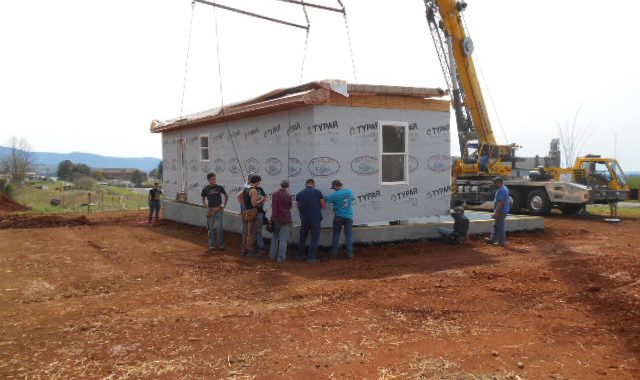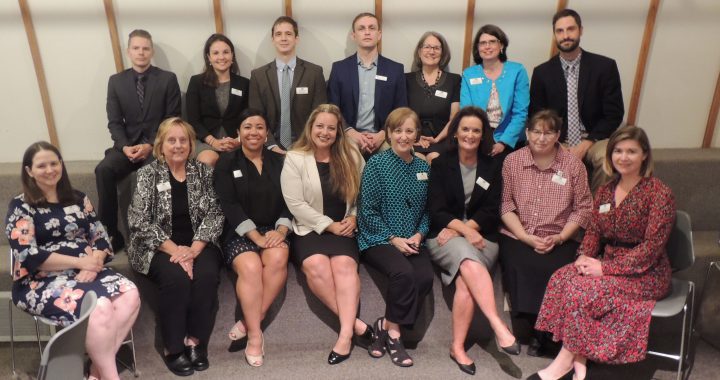Augusta County farmer, Gerald Garber, planted 150 acres of his land surrounding the Shenandoah Valley Regional Airport in sunflowers to welcome travelers to the beautiful Shenandoah Valley. The sunflowers attract thousands of butterflies and were planted along with other crop cover plants to help fertilize the land on his Cave View Farm in Weyers Cave. Mr. Garber is the chair of the Augusta County Board of Supervisors, chair of the Shenandoah Valley Airport Commission and an ardent supporter of agribusiness in the region.
Category Archives: News
GO Virginia BRCC Cyber Security Graduates
Six graduates of Blue Ridge Community College’s GO Virginia cyber security training program have obtained positions with Tiber Creek Consulting, which is opening a new office in Waynesboro, VA, in the same building as BRCC’s Online Outpost. In addition, more students will participate in paid internships with Tiber Creek this fall. BRCC students will be performing cyber security assessments for federal contractors in Virginia as part of a $1.4 million Department of Defense grant awarded to GENEDGE Alliance.
The BRCC students received reduced-cost training from a GO Virginia grant awarded to BRCC in 2018. The goal of the grant is to train and employ 50 Tier I Cyber Security Analysts by July 2020, and to partner with local companies to offer in-demand, excellent-paying employment opportunities. The GO Virginia training program includes a security review course, CompTIA Security+ Exam, Cybrary online training, and on-the-job training, and takes approximately three months to complete.
Joint MPO Meeting Held
The Staunton-Augusta-Waynesboro Metropolitan Planning Organization (SAWMPO) held its 5th annual Joint Policy Board Meeting with the Charlottesville-Albemarle MPO on Tuesday, October 1, 2019 in Crozet. Board members and agency staff heard presentations on inter-regional transit, the restoration of the Crozet Blue Ridge Tunnel, state-wide transit updates from the Department of Rail and Public Transportation, and toured the Perrone Robotics facility and lab to learn more about the local company’s autonomous vehicle research and development.
SAWMPO and CA-MPO meet annually and share their planning processes under a Memorandum of Agreement for collaborative and inter-regional planning signed in September, 2017.
Afton Express Study Continues
The Virginia Department of Rail and Public Transportation (DRPT) is advancing the planning for the Afton Express transit service proposed to connect Staunton, Augusta County, Waynesboro and Charlottesville. DRPT has contracted with Kimley-Horn to confirm the need and projected ridership for the service from the Feasibility Study completed in 2017, and to refine a service plan and budget, as well as developing performance metrics. A stakeholder group representing the CSPDC and TJPDC, local jurisdictions and the University of Virginia met on September 23 to hear from the consultant on the planning work completed thus far, and to discuss next steps, including a preliminary discussion related to funding. The consultant presented an update on the study at the Joint MPO meeting on October 1, and will meet again with the stakeholder group in mid-November.
CSPDC Submits Chesapeake WIP III Final Reports to DEQ
Last Spring, additional funding was granted by the Virginia Department of Environmental Quality (DEQ) to the CSPDC and 14 other Bay PDCs to continue the Phase III Watershed Implementation Plan (WIP III) efforts. The CSPDC held their third stakeholder meeting in August, 2019 to continue to develop regional Best Management Practices (BMP) project ideas and share funding opportunities. The CSPDC’s final WIP III reports were submitted to DEQ on September 30.
To meet the 2025 Chesapeake Bay Total Maximum Daily Load requirements, the Office of the Virginia Secretary of Natural Resources, through DEQ, released the Virginia’s Final Phase III Watershed Implementation Plan in August. The new PDC WIP III Implementation Assistance program with DEQ is anticipated to begin this Fall.
CSPDC Sub-Region Participates in Walkability Institute
The Buena Vista/Lexington team participating in the Virginia Walkability Action Institute (VWAI) presented its Action Plan to the Virginia Department of Health on August 12, 2019. The VWAI focuses on opportunities to enhance walkability in communities, and brings together multi-disciplinary teams to pursue policy, systems and environmental changes to increase physical activity and reduce chronic disease. The team’s Action Plan focuses on using community planning processes already underway, such as the Comprehensive Plan updates and sidewalk condition inventories, to identify the most critical infrastructure projects for improving opportunities to walk while strengthening existing community partnerships.
The Virginia Department of Health is providing up to $15,000 to each team for quick-start mini grant activities to implement the Action Plans. The Buena Vista/Lexington team is developing trail maps for Glen Maury Park and trail signage for the Riverwalk in Buena Vista, and purchasing FitBits and gym memberships for those participating in VDH-sponsored wellness programs.
Grants to Increase Broadband Services Are Submitted
To help bring high-speed, affordable internet to unserved areas in the region, the CSPDC submitted two applications for the 2020 Virginia Telecommunication Initiative (VATI) program early in September. The first application was submitted on behalf of Bath and Rockbridge counties, with
co-applicant, BARC Electric Cooperative. If funded, this project would provide internet service to 1,085 residences and businesses. The project area includes Vesuvius, Big Hill, Effinger, South Buffalo, Glasgow and Buck Hill in Rockbridge County, and Warm Springs and Millboro in Bath County. The second application was submitted on behalf of Bath and Highland counties, with co-applicant, MGW Telephone. This project would service 240 residences and businesses and includes the project areas of Dry Run and Mountain Grove in Bath County, and the Doe Hill area of Highland County.
DHCD anticipates announcing the grant awards in December, 2019.
Facts & Figures Published
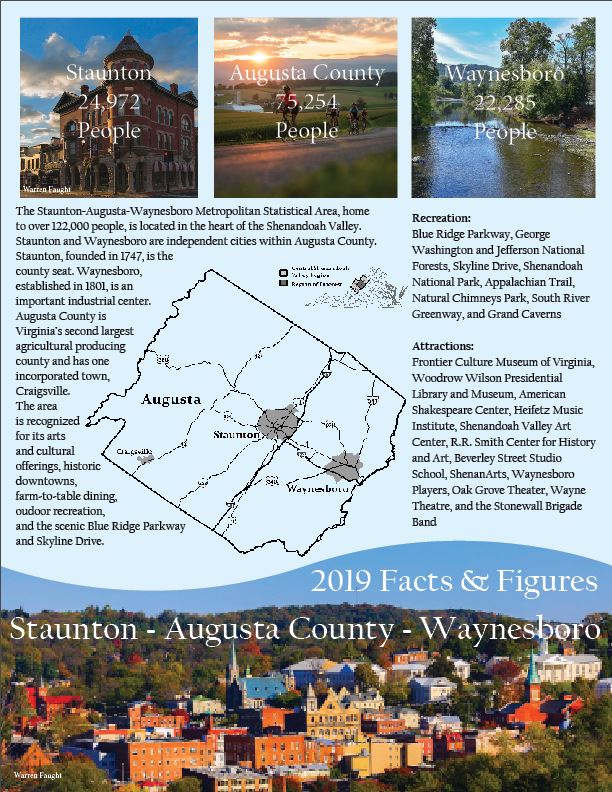 One of the CSPDC’s roles in economic development is to be a resource for data about the region and the PDC’s localities. To help support this important function, the CSPDC creates and distributes Facts & Figures, an easy-to-read snapshot of each sub-region’s people, jobs, schools, and other unique attributes. The four newly designed 2019 Facts & Figures documents were released this Fall and are available on the CSPDC website. Printed copies are set to be distributed throughout the remainder of this year.
One of the CSPDC’s roles in economic development is to be a resource for data about the region and the PDC’s localities. To help support this important function, the CSPDC creates and distributes Facts & Figures, an easy-to-read snapshot of each sub-region’s people, jobs, schools, and other unique attributes. The four newly designed 2019 Facts & Figures documents were released this Fall and are available on the CSPDC website. Printed copies are set to be distributed throughout the remainder of this year.Rockbridge County High School Students Win Award
The Rockbridge County High School (RCHS) Building Trades students and their instructor took top honors for the Youth Group Effort of the Year at the 20th Annual Virginia Statewide Neighborhood Conference in September. The award recognizes a youth group that has made a significant impact or contribution in their community. The Building Trades curriculum at RCHS provides students with methods and techniques in building construction, preparing them to enter the trade upon graduation. RCHS was recognized for its work with Rockbridge Area Habitat for Humanity in which the students have helped to build 18 homes for area families since 2001.
Since 2014, the RCHS students have helped to build five modular homes for the Greenhouse Village affordable housing project. One home is built each year, and then transported less than a mile to the site. Now in Phase II, Greenhouse Village is a multi-phase partnership between Rockbridge Area Habitat for Humanity and Rockbridge County to construct homes and build infrastructure for roads, water and sewer. The project is funded through the Community Development Block Grant Program administered by the Virginia Department of Housing and Community Development. The CSPDC provides grant administration services to the County for this project.
CSPDC Celebrates 50th Anniversary
Over 75 people gathered to celebrate the Central Shenandoah Planning District Commission’s 50th anniversary on September 17, 2019 at the Frontier Culture Museum in Staunton. In attendance were local government representatives, CSPDC Commissioners and staff, and stakeholders. The program featured four of the CSPDC’s signature programs including BRITE Transit, Fields of Gold Farm Trail, Transportation Planning, and Shenandoah Valley Project Impact.
The CSPDC was chartered by the Virginia General Assembly in September, 1969 to provide planning, technical assistance and facilitation services to its five counties, five cities and 11 towns. For the past 50 years, the CSPDC has assisted its localities with a variety of economic and community development programs that improve the economic vitality of the region and the quality of life of its citizens.
A warm thank you is extended to the sponsors of the event which include: Litten & Sipe, AMT & Associates, VML/VACO, Kimley-Horn, Virginia Regional Transit (VRT), Draper Aden Associates, The Berkley Group, and Virginia Housing Development Authority (VHDA).
